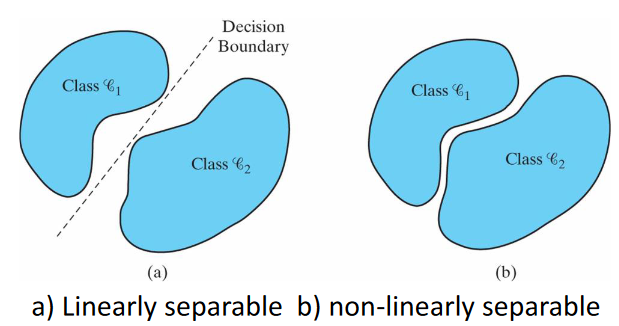Error-Correcting Perceptron Learning
- Uses a McCulloch-Pitt neuron
- One with a hard limiter
- Unity increment
- Learning rate of 1
If the -th member of the training set, , is correctly classified by the weight vector computed at the -th iteration of the algorithm, no correction is made to the weight vector of the perceptron in accordance with the rule:
Otherwise, the weight vector of the perceptron is updated in accordance with the rule
- Initialisation. Set . perform the following computations for
time step - Activation. At time step , activate the perceptron by applying continuous-valued input vector and desired response .
- Computation of Actual Response. Compute the actual response of the perceptron:
where is the signum function. - Adaptation of Weight Vector. Update the weight vector of the perceptron:
where - Continuation. Increment time step by one and go back to step 2.
- Guarantees convergence provided
- Patterns are linearly separable
- Non-overlapping classes
- Linear separation boundary
- Learning rate not too high
- Patterns are linearly separable
- Two conflicting requirements
- Averaging of past inputs to provide stable weight estimates
- Small eta
- Fast adaptation with respect to real changes in the underlying distribution of process responsible for
- Large eta
- Averaging of past inputs to provide stable weight estimates
